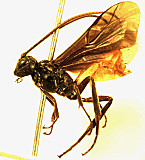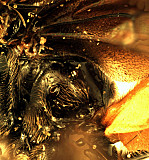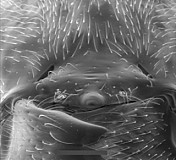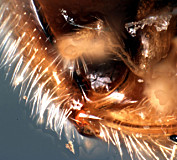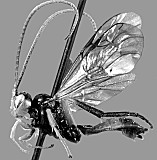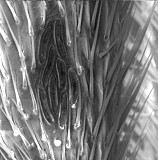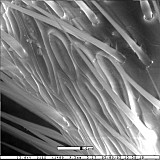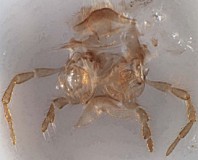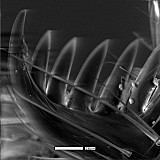Type species: Scolobates crassitarsus Gravenhorst, 1829 (= Scolobates auriculatus (Fabricius, 1804)), by subsequent designation of Westwood (1840).
Gravenhorst, 1829: 357-360(descriptions of genus and three species).
Nees von Esenbeck 1830: 1130-1150 (generic redescription).
Stephens 1835: 306 (generic and species redescriptions).
Westwood 1840: 57 (generic synopsis).
Brullé 1846: 322 (generic redescription).
Ratzeburg 1848: 76-77 (generic redescription; figures).
Foerster 1869: 157-159 (key to genera of Banchoidae).
Kriechbaumer 1877: 133-137 (discussion of S. longicornis morphology; collections holdings; species description).
Bridgman and Fitch 1884: 69-71 (key to genera).
Cresson 1887: 205-210 (key to genera of Ophioninae).
Davis 1897: 264 (key to genera, generic and species redescriptions).
Dalla Torre 1902: 283, 327-328 (catalog).
Schmiedeknecht 1907: 613-628 (keys to tribes and genera).
Morley 1911: 344 (generic and species redescriptions).
Schmiedeknecht 1912: 2357, 2490-2493 (key to Scolobatina, generic and species descriptions and redescriptions).
Morley 1913: 140 (generic and species descriptions and redescriptons).
Roman 1915: 4 (key to genera; discussion of genus morphology).
Meyer 1936: 7-8, 137-139 (keys to genera of Tryphonini and species of Scolobates: generic and species redescriptions).
Townes 1945: 480 (catalog).
Townes and Townes 1951: 321 (catalog).
Hopper 1959: 169 (etymological information).
Townes et al. 1965: 661 (catalog).
Townes 1970: 102, 104 (key to genera, generic redescription).
Carlson 1979: 592-593 (catalog).
Kasparyan 1981: 361-431 (key to genera, generic and species redescriptions).
Yu and Horstmann 1997: 455 (catalog).
Zhaurova and Wharton 2009: 1-77 (key to genera; generic redescription; analysis of relationships).
Aglyphus Giraud, 1872: 411.
Type species: Aglyphus nigripennis Giraud, 1872. Monobasic.
Giraud, 1872: 411 (description).
Dalla Torre 1902: 1055 (catalog, as genus incertae sedis).
Viereck 1914: 186 (type species).
Townes 1945: 480 (catalog; synonymy).
Townes and Townes 1951: 321 (catalog; synonymy).
Townes 1970: 104 (synonymy).
Yu and Horstmann 1997: 455 (catalog; synonymy).
Parabraconia Schmiedeknecht, 1914: 2803.
Type species: Parabraconia nigripennis Schmiedeknecht, 1925, by subsequent inclusion by Schmiedeknecht (1925) (= Scolobates nigripennis (Giraud, 1872)).
Schmiedeknecht, 1914: 2803 (description).
Schmiedeknecht 1925: 3121-3122 (first included species).
Meyer 1936: 340 (fauna of Russia and adjacent countries).
Townes 1970: 104 (synonymy).
Carlson 1979: 592-593 (catalog).
Yu and Horstmann 1997: 455 (catalog; synonymy).
